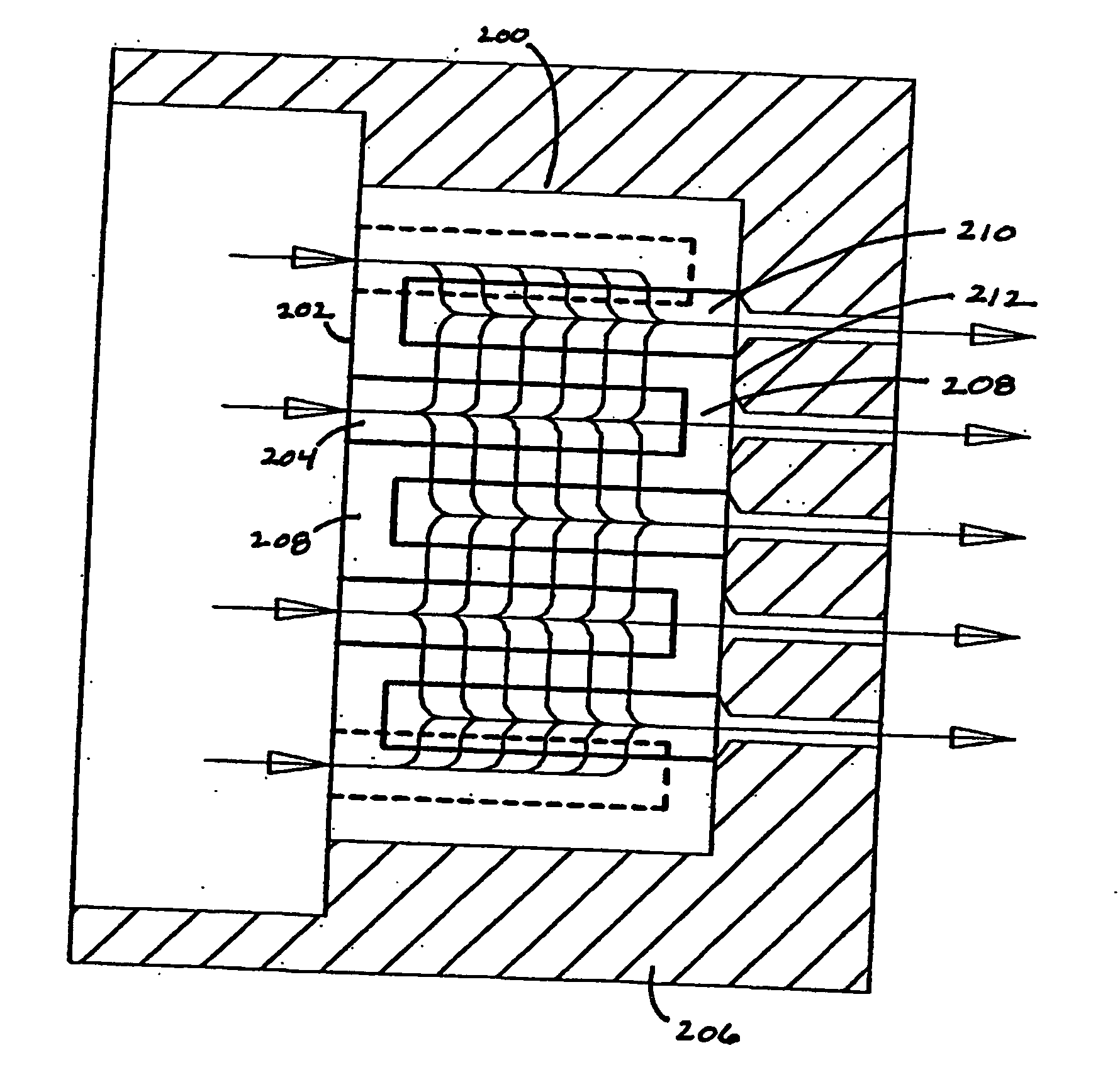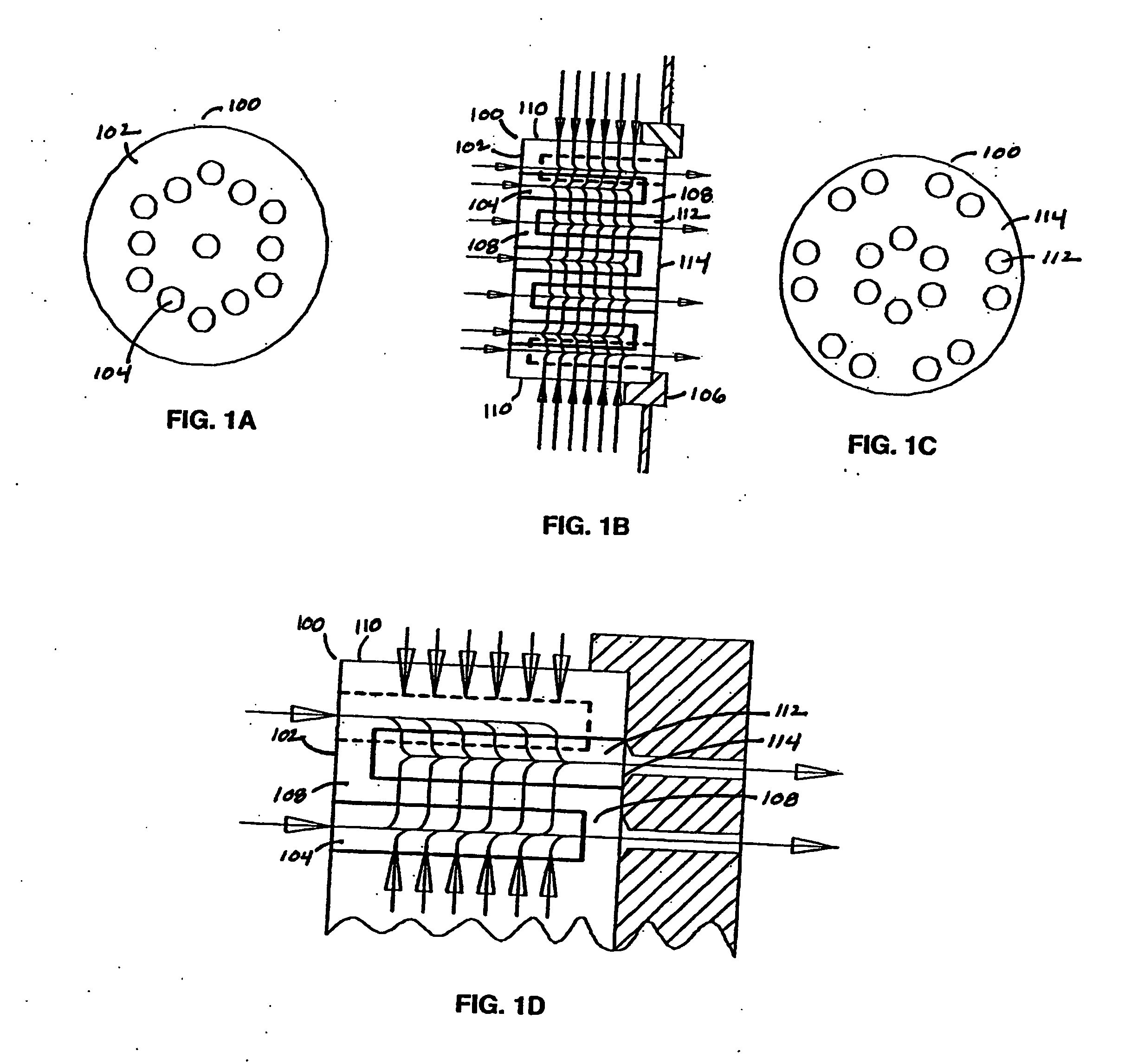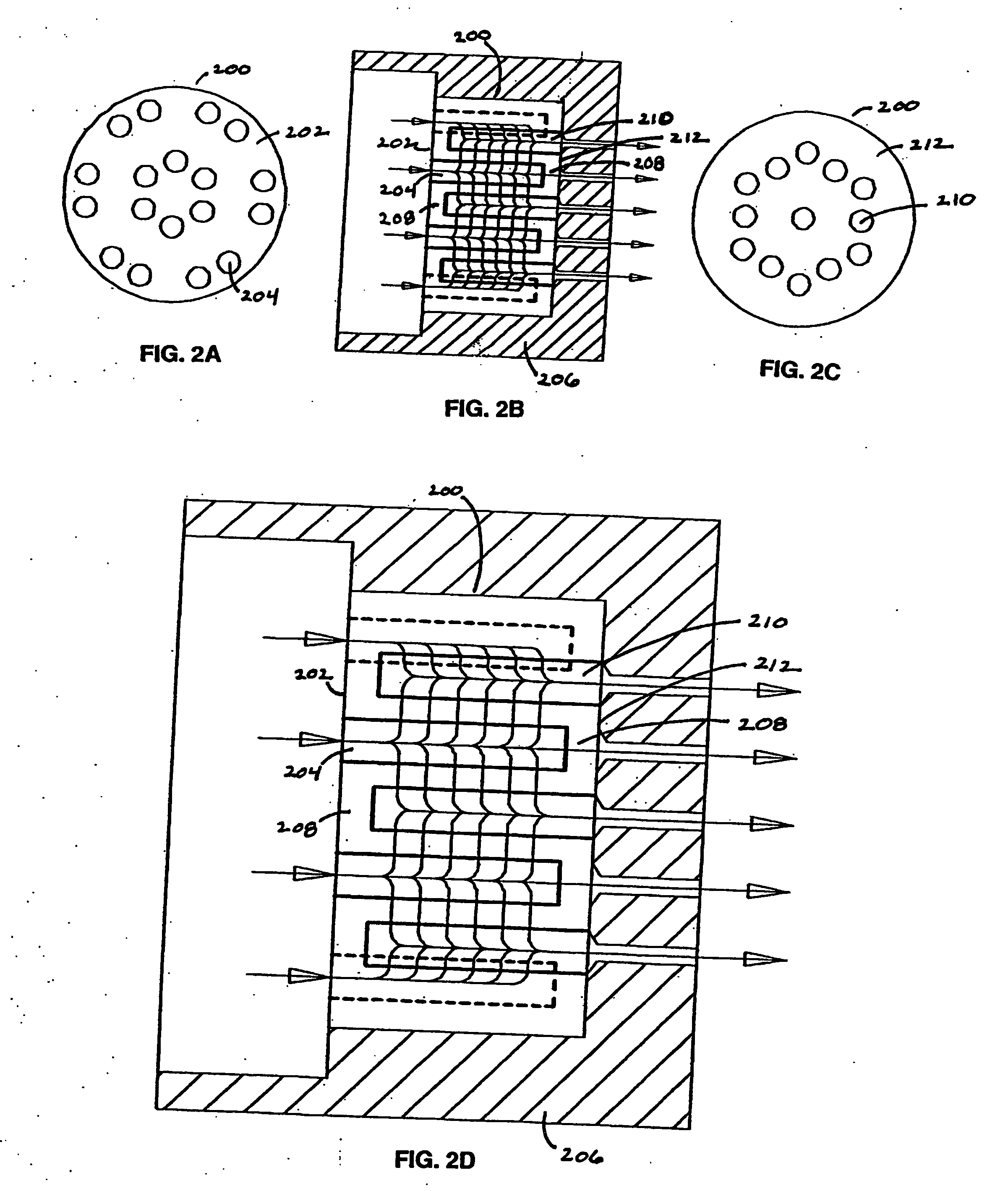Extended area filter
- Summary
- Abstract
- Description
- Claims
- Application Information
AI Technical Summary
Benefits of technology
Problems solved by technology
Method used
Image
Examples
example 1
[0051] An extended area filter was produced as illustrated in FIG. 3D. Dies were configured to produce the three discrete cavity patterns for the top cap, filter body, and bottom cap. The powder metal tooling consisted of a carbide die, an upper punch, a lower punch, and core rods. The tools were adapted to a hydraulic die-set powder metal press. The following charge weights of 50 / 100 mesh blend of nickel powder were placed in the dies: 35 g for each of the top and bottom caps, and 185 g for the filter body. The parts were compacted to approximately 4000 psi, and then ejected from the dies. The parts were assembled, utilizing the alignment features molded into the top and bottom end caps, and pressed together at approximately 2000 psi. The resulting one-piece filter part was then sintered at approximately 2400° F. in a hydrogen atmosphere with a dew point less than 40° F. for 1½ hours.
[0052] The finished filter was approximately 50 mm in diameter x 30 mm tall. The filter had 13 fil...
example 2
[0054] An extended area filter was produced from an austenitic chromium-nickel stainless steel powder blend as illustrated in FIG. 3D, using similar procedures to those described in Example 1. The parts were pressed from a blend of 30 / 45 mesh powder in the following weights: 25 g for each of the top and bottom caps, and 172 g for the filter body. The part was then sintered at approximately 2450° F. in an atmosphere of 87.5% hydrogen and 12.5% nitrogen, with a dew point less than 40° F. for {fraction (11 / 2)} hours.
[0055] The finished filter was approximately 50 mm in diameter x 30 mm tall. The filter had 18 filter cavities, each 5 mm in diameter x 30 mm long. This design added approximately 3.5 times the effective filter surface area and provided about twice the flow rate compared to a typical sintered metal extended area filter assembly (31 cups pressed into a plate) of the same height and diameter. A bubble point measurement on the filter resulted in an absolute micron rating of a...
PUM
| Property | Measurement | Unit |
|---|---|---|
| Length | aaaaa | aaaaa |
| Length | aaaaa | aaaaa |
| Length | aaaaa | aaaaa |
Abstract
Description
Claims
Application Information
 Login to View More
Login to View More - R&D
- Intellectual Property
- Life Sciences
- Materials
- Tech Scout
- Unparalleled Data Quality
- Higher Quality Content
- 60% Fewer Hallucinations
Browse by: Latest US Patents, China's latest patents, Technical Efficacy Thesaurus, Application Domain, Technology Topic, Popular Technical Reports.
© 2025 PatSnap. All rights reserved.Legal|Privacy policy|Modern Slavery Act Transparency Statement|Sitemap|About US| Contact US: help@patsnap.com



